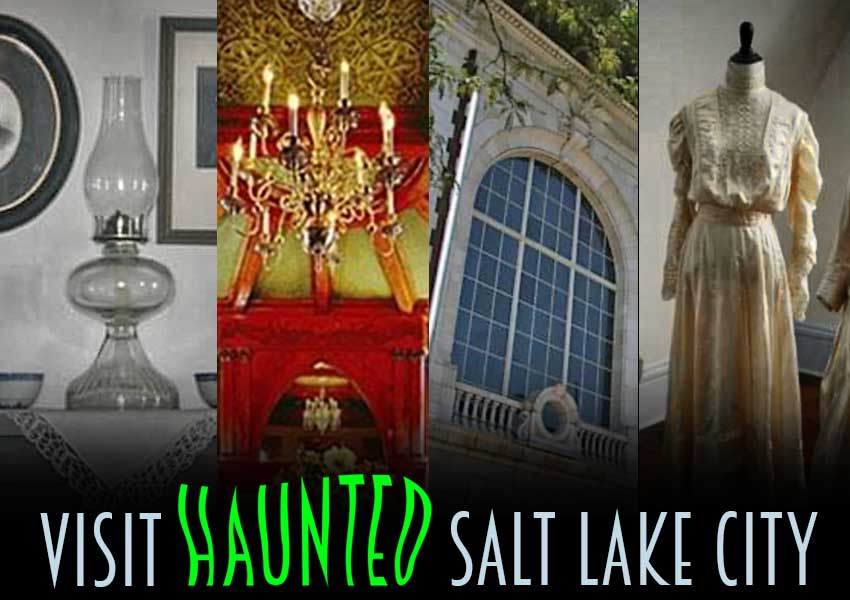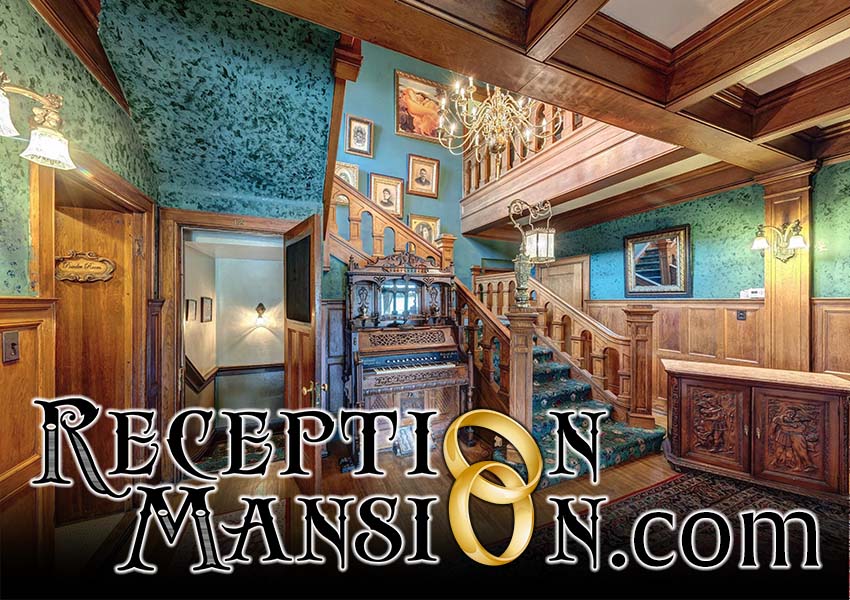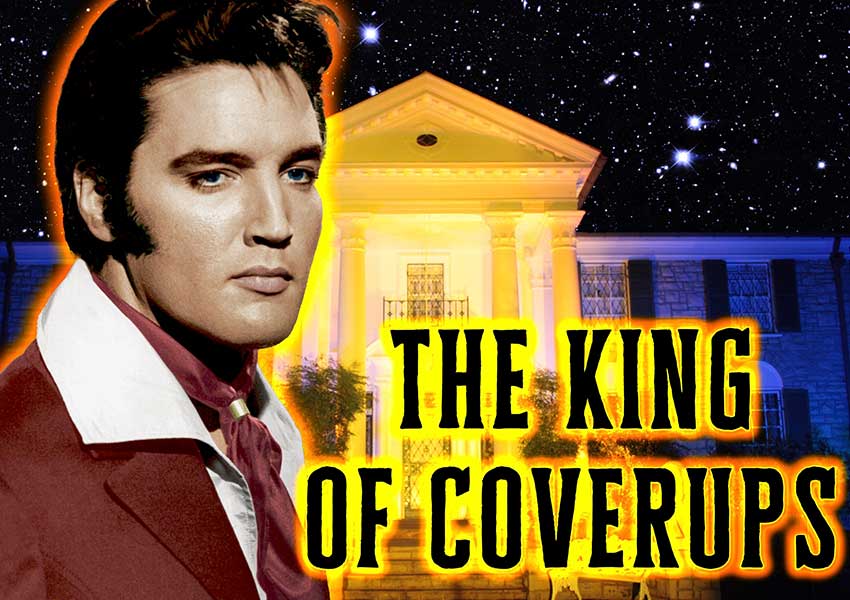Santa Fe New Mexico
Oldest House Museum (De Vargas House)



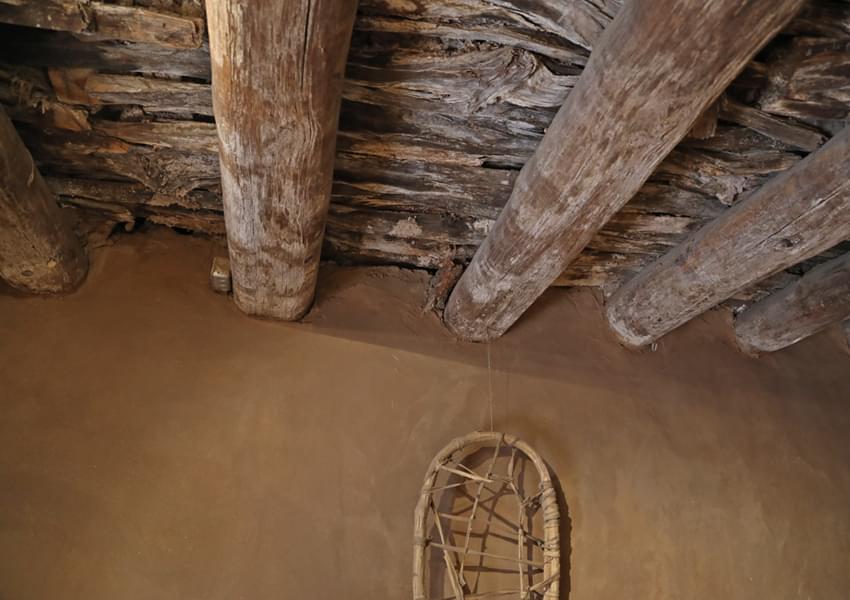

De Vargas Street is the favorite hangout of spirits who suffered
while alive from Tyranny, or had paid the price for the Tyranny of the Spanish.
DESCRIPTION
The “Oldest House in Santa Fe”, also called The De Vargas House Museum is made up of a three room, adobe that is 372 years old, and an attached two story house built around 154 years later that offered a more modern, comfortable home.The 372 year old adobe has been the home for native Americans, Spanish folks, and many others who lived in the Barrio De Analco Historic District.
The original three smaller rooms are typical of very old, classic adobe homes, built in the 17th century. They have very thick adobe walls, dirt floors and very small windows to protect the residents from both the heat and the cold. The doors and windows also are really small to modern standards.

This property got the label of being the oldest house because The Urrutia map of 1766-68 shows a small structure near the San Miguel Chapel. Also, the rafters of the lower, older adobe rooms have long wooden beams called a “visa”, commonly used in the traditional adobe architecture that date back to 1740-1760. The older rooms with the really thick adobe walls and small windows were built in 1646, about 48 years after the Spanish moved in this area to start a settlement.
The Oldest House Museum is set up in the three older rooms. They have replicas of simple furniture, artifacts and the traditional wood oven that would’ve been used by former inhabitants from early times. Tom and I found it very interesting indeed. People didn’t need a lot of space or much stuff to live here. Values were very different; they would of approved of the current “Tiny House” movement of today.
Four steps lead up to the much larger 1800s’ house with the 1925 second story, which is the home of the OLDEST HOUSE INDIAN SHOP that sells really nice HAND-MADE Native American pottery, fetishes (little figures, animals etc.), Kachinas, flutes, and other arts and crafts; something for everyone. I enjoyed shopping here too! This is not a tourist trap operation, but offers genuine, Native American items that are well-made and beautiful as well.
HISTORY
Being near the river, this spot has long been a popular property on which to live. First community who settled here was a Tank-speaking Indian village in 1200 B.C. First structure that stood on this particular property was a pueblo for a family of Indians. This village of Tano speaking Indians lived here until sometime around 1435 AD, when they decided to move southward perhaps looking for probably better soil for field crops and hunting grounds.
In 1598, with a protective force of friendly Tlaxcalen Indian warrior auxiliaries, a group of Spanish settlers and Franciscan Padresunder the leadership of Don Juan de Onate found this idyllic place and established a permanent settlement. The Tlaxcalen Indians formed their own barrio; soon known as El Barrio de Analco, at the same time as the Spanish settlement was built, called La Villa Real de Santa Fe de San Francisco de Asisi. Forty-five years later, the original adobe that first stood here before The Oldest House was built to house a Tlaxcalen Indian family.
All people enjoyed the trout caught in the river, and were able to grow fields of crops just south of San Miguel. Their peaceful coexistence didn’t last. The true goals became apparent and were embraced by both the Spanish authorities and the Franciscan Padres; relying on the traditional, old world harsh Spanish ways. They put in force “the underlying motives of control, subjugation and exploitation of the indigenous people; deliberate cultural genocide, borne of a sense of manifest destiny imbued by extreme ethnocentrism.”
They obviously didn’t follow the sage advice that being positive works better than being negative and punitive. The Franciscan Padres chose to ignore Apostle Paul in his advise on how to spread the Gospel in favor of strong-arm, cruel tactics long practiced by the Spanish.
As the years passed, Spanish became more and more abusive, taking away the religious freedom of the Indians, forcing conversion to Catholicism using brutal means, using cruel and torturous ways to punish rebellions and dissent, forced-labor and putting high tariffs on the Indian’s crop production. Mini-rebellions resulted in executions and more oppression.

All this tyranny was bound to start a united rebellion! The final nail in the coffin was the cruel executions of the medicine men that brought all the pueblos together as a united military force to kick the Spanish out of New Mexico temporarily in 1680. In Santa Fe, it was called the Great Pueblo Rebellion; resulting in death tolls for both Spanish and the Indians who supported them.
During the Great Pueblo Rebellion, the Tlaxcalans Indians of the Barrio de Analco suffered greatly. Many were killed when their homes were sacked and burned because they were loyal to the Spanish. The survivors went across the river and joined the Spanish forces, but the Spanish/Indian joint counter-attack was a bust.
Despite a peace accord drawn between the Pueblos and Spanish Commander Diego de Vargas in 1692, Diego de Vargus returned to exerting increasingly severe control, again feeding the feelings of resistance. When he arrived back to Santa Fe after a trip to Mexico, he and his troops were stopped from reentering Santa Fe by seventy Pueblo warriors and 400 of their family members. Things didn’t end very well for the brave warriors and their families; a quick, bloody recapture was the result, and traditional Spanish way of showing no mercy prevailed. The seventy warriors of course were executed and their families were to suffer ten years of slavery. Young girls under 12 were deemed to be innocent, and sent to Mexico away from their families.
This harshness wasn’t to last though. The Spanish found that they couldn’t have total control of New Mexico like they did before; only part of it with Pueblos who had signed the peace treaties. The high loss of Spanish life from all of the rebellions further convinced the Spanish to rethink their former strategies and try a new approach here, at about the same time they started to colonize California. What they had to offer that the Pueblos wanted was added protection against marauding tribes, which was the motivating force for signing the peace treaties in the first place. They could positively build on that fact. They changed their policies in the new world and treated the California Native Americans in positive ways at the new missions established by the Franciscan Padres.
When more wise Spanish minds exerted control in Santa Fe, attempts to eradicate Indian culture and the abuse of Indians was curtailed. The Franciscan Padres started using positive ways to work with the population of Santa Fe. General exploitation, forced labor and forced tributes were prohibited in New Mexico.
Spanish soldiers and Indian warriors worked together to defend against the Apaches and other hostile tribes. Spain also gave “substantial land grants to each Pueblo and appointed a public defender to protect the rights of the Indians and argue their legal cases in the Spanish court.”

This new strategy was a winner and brought peace and cooperation. Over the eras, New Mexico became a great blend of cultures.
Between 1709–1710 this adobe, now called the De Vargas House became temporary home to Spanish Territorial Governor Chacon Medina Salazar, Marquez de Penuela. It is hard to imagine that such important folks lived in this dirt-floored adobe while repairs were being made to the San Miguel Church. San Miguel Church also housed important officials in government, it seems as well as being a church.
During the 1800s, a connecting house with a second story was built. People probably lived in the newer structure and used the old adobe rooms as storage, like we use basements today. By the late 1800s, genizaros or “acculturated plains Indians” such as the Apaches and Navajos, as well as the families of Spanish soldiers were living in Barrio De Analco Historic District.
The house belonged to the Archdioceses until July 31, 1881. It became part of the real estate deal made between Bishop Lamy and the Brothers of the Christian Schools. Along with San Miguel Chapel and other church property, the Old De Vargas House was sold for $3,000; becoming the property of the Christian Brothers. For decades this house was included in descriptions pertaining to the area immediately surrounding the San Miguel Chapel.
The second story of the newer house was removed during 1902 when the structure was a fixer-upper opportunity really needing to be renovated. Up until the 1920s, the Oldest De Vargas House was continually occupied by people representing all the cultures of Santa Fe, probably people with not much money for rent. In the early 1920s’, the De Vargas House was sold again. Around 1925, the adobe rooms and attached house were restored, which included the rebuilding of the second story to the house.
Many people lived here throughout the 20th century. At some point, it became commercial property and probably a variety of stores used it as a storefront, when Santa Fe began to be a tourist attraction and the area became a commercial draw for businesses catering to tourists. Probably during the same time, owners made the best of owning the oldest house and probably set up some sort of museum in the older three rooms as a way to draw tourists into their building.
INDIAN SHOP AT LA FONDA, who owned The De Vargas House Museum since April of 2015, consolidated their businesses and moved from the La Fonda Hotel space into the De Vargas House on December 1st, 2015. They moved their retail business into the first floor of the 1800s’ house, calling it OLDEST HOUSE INDIAN SHOP.
HISTORY OF MANIFESTATIONS
People who die violently or are brutally executed and feel they didn’t deserve it, sometimes have angry attitudes that grounds them in the nearest structure.
There were many executions along this street due to resistance and the many small rebellions against the Tyranny; Gallows were probably built in the Barrio De Analco Historic District to try to terrorize the residents into submission. Two women were accused of being witches and were beheaded.
Spirits that have lingering resentments about their lives or death and that can’t let go of them can make them a negative source in whatever structure they choose to stay inside.
The Great Rebellion started with the killing of the Tlaxcalen Indians who supported the Spanish and lived on this street, near the San Miguel Chapel. They were murdered by an angry mob of people who were sick of the tyranny. Where were the Spanish who should be protecting them? They had been the protectors of the people who obviously had no gratitude and forgot how much they had done for the people.
Spirits who didn’t reach the goal they were going for and it resulted in death and suffering, may have regrets and blame themselves, not allowing themselves to rest. Perhaps the last round of executions carried out by De Vargas of the seventy warriors who dared to stop De Vargas and his troops from reentering Santa Fe perhaps blame themselves for not defeating the Spanish. The consequences were pretty severe.
House museums can draw back former inhabitants who love the items on display.
As the three older rooms are set up with items and furnishings that would have been found during its early history, this may draw back spirits from the time that had these kinds of furnishings – perhaps giving them a little peace from their unhappy restlessness and grumpy demeanor.
The spirits may also enjoy looking at all the Indian jewelry, Native American pottery, fetishes (little figures, animals etc.), Kachinas, flutes, and other arts and crafts for sale.
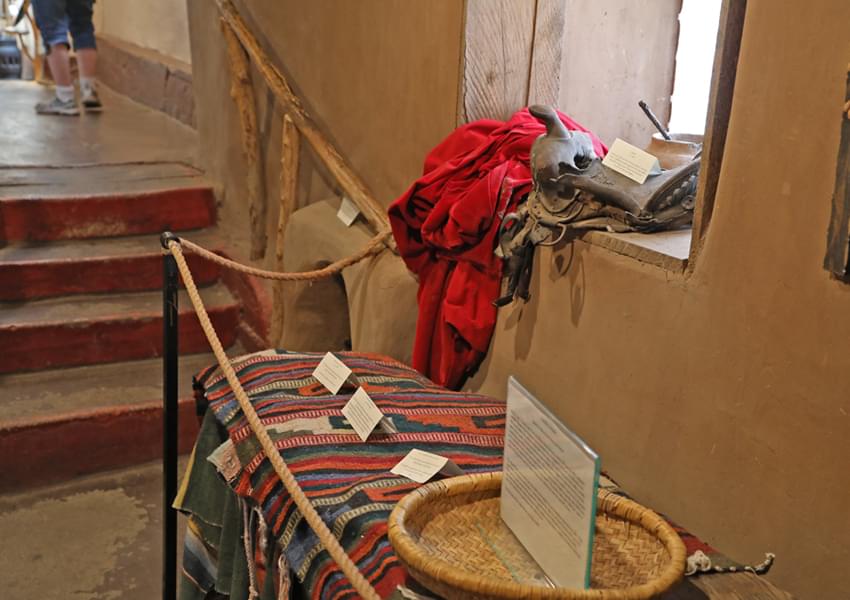
MANIFESTATIONS
It is hard to say exactly who are the spectral, non-paying tenants. At night, the spirits have the place to themselves. They are describes as malevolent, meaning that they still have issues, and show it in their behavior.
Two Grumpy Restless Spirits
Call this structure their home, letting the living know that they are present, though nothing is specifically reported.
Guesses can be made: Probably find electricity amusing, maybe causing heavy footfalls, shadows, appearing in front of the living.
Providing a heavy feeling, and give the people the idea that they are being watched.
Perhaps they move items around the shop.
Perhaps touching, breathing down necks.
Getting their chuckles at the expense of the living in not particularly nice ways.
When we visited, I didn’t feel anything unusual but it was early in the afternoon. Perhaps the spirits were somewhere else in the structure.
Spirits of Two Witches
Some say that they have seen their heads floating down the street!
STILL HAUNTED?
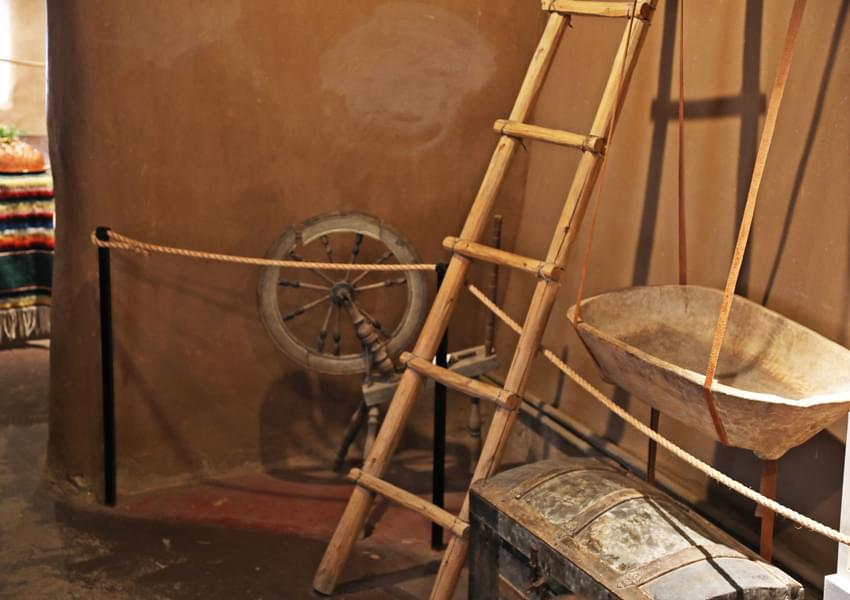 Probably so. Not much has been shared – just that the spirits aren’t particularly nice.
Probably so. Not much has been shared – just that the spirits aren’t particularly nice.
Lucky that they have the structure to themselves at night. Could be slaughtered Native Americans who had the audacity to complain or resist, resistance warriors, beheaded witches, Spanish soldiers who were killed, anyone else who once lived here, or died from tyranny or execution nearby.
It is said that the whole De Vargas Street is very haunted indeed.
Pain, torture, death at the hands of others in awful ways does has the tendency to create hauntings, and apparently a lot of the buildings along this street are indeed haunted with spirits that can’t rest.
LOCATION
215 E De Vargas Street,
Santa Fe, New Mexico 87501
In historical Santa Fe on E. De Vargas Street, The Oldest House Museum is located just three blocks south of the plaza at Old Santa Fe Trail, within the Barrio De Analco Historic District. The Oldest House Museum is near the cross street Old Santa Fe Trail and across the street from the San Miguel Chapel.
SOURCES INCLUDE
- https://santafe.org/blog/ghost-stories-to-scare-you-into-coming-to-santa-fe/
- https://en.wikipedia.org/wiki/De_Vargas_Street_House
- https://www.historicsantafe.org/the-oldest-house/
- https://newmexiconomad.com/history/spirit/pueblorevolt.html
Our Haunted Paranormal Stories are Written by Julie Carr
Our Photos are copyrighted by Tom Carr
Visit the memorable… Milwaukee Haunted Hotel






